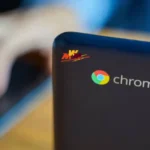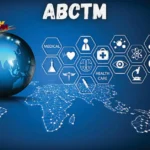The beauty industry has been transformed by advances in nail technology, but nothing has had more impact than the development of UV-cured gel systems. Gel nails have moved from professional-only treatments to mainstream beauty routines because they solve the fundamental problem that plagued traditional manicures: they actually last. Understanding how gel technology works and why it’s superior to conventional polish helps you make better decisions about nail care and get better results whether you’re doing them yourself or visiting a salon.
The Science Behind Gel Nail Longevity
Traditional nail polish is essentially colored lacquer that dries through solvent evaporation. As solvents evaporate, they leave behind a film of resins and colorants that form the visible coating. This process creates a relatively soft, flexible finish that chips and peels easily with daily activities.
Gel polish contains oligomers and photoinitiators instead of traditional solvents. When exposed to UV or LED light, these compounds undergo polymerization – a chemical reaction that creates long molecular chains cross-linked into a three-dimensional network.
This polymerized structure is fundamentally different from dried lacquer. Instead of a soft film sitting on top of your nail, you get a hard, durable coating that’s chemically bonded to the nail surface. The molecular structure is similar to what you’d find in automotive paint or aircraft coatings.
Laboratory testing shows that properly cured gel nails have about 10 times the impact resistance of traditional polish and maintain their gloss for 2-3 weeks under normal wear conditions. The superior durability comes from this polymer network structure rather than just being a thicker coating.
Health and Safety Considerations
UV exposure from nail lamps has generated concern, but research data provides perspective on actual risk levels. A typical 10-minute gel manicure exposes hands to about the same amount of UV radiation as 2-3 minutes of direct sunlight.
The wavelengths used for gel curing (365-405 nanometers) are in the UVA spectrum, which penetrates skin more deeply than UVB but is less likely to cause immediate burning. Long-term exposure studies haven’t found increased skin cancer rates among nail technicians or frequent gel nail users.
For people with UV sensitivity or those who prefer maximum caution, fingerless UV protection gloves are available that allow nail curing while protecting surrounding skin. These gloves use fabrics that block UV wavelengths while remaining thin enough for normal hand movement.
Allergic reactions to gel products are rare but possible. Acrylates used in gel formulations can cause contact dermatitis in sensitive individuals. Symptoms include redness, swelling, or itching around the nail area. Most reactions occur from skin contact with uncured gel rather than the cured final product.
Comparing Gel Types and Formulations
Not all gel nail products use the same chemistry or provide identical results. Understanding the differences helps you choose products that match your needs and expectations.
Traditional gel polish requires base coat, color coats, and top coat as separate products. Each layer serves a specific function: base coat promotes adhesion, color provides coverage and appearance, top coat provides durability and shine.
One-step gel systems combine all functions into a single product. While convenient, they typically don’t perform as well as multi-step systems because no single formulation can optimize all three functions simultaneously. Color coverage and durability are usually compromised in exchange for convenience.
Builder gels contain higher concentrations of oligomers and create thicker, stronger coatings. They’re ideal for nail extensions or reinforcing weak natural nails but require more skill to apply smoothly. Builder gels cure harder than regular gel polish and can be filed and shaped after curing.
Hybrid formulations attempt to bridge the gap between traditional polish and full gel systems. They cure under UV light but remain somewhat flexible after curing. These products are easier to remove than traditional gels but don’t last as long or provide the same durability.
Professional vs At-Home Application
Professional gel manicures use commercial-grade equipment and products that aren’t available for home use. Professional UV lamps typically output 54-100 watts compared to 24-36 watts for home units. Higher wattage means faster, more complete curing and better adhesion.
Salon-grade products contain higher concentrations of active ingredients and undergo more rigorous quality testing. Professional base coats often include acid primers that etch the nail surface microscopically for superior adhesion. These products work better but require more skill to apply safely.
Professional application techniques make a significant difference in durability. Technicians learn to recognize proper cure levels by appearance and feel, adjust application thickness for different nail conditions, and identify potential adhesion problems before they cause failures.
However, home application has improved dramatically with better equipment and product availability. High-quality home systems can produce results that rival professional work when proper techniques are used consistently.
Removal Techniques That Preserve Nail Health
Improper gel removal causes more nail damage than the gel itself. Picking, peeling, or forcibly removing gel nails removes layers of the natural nail plate and weakens the nail structure permanently.
The safest removal method uses acetone to dissolve the polymer bonds gradually. Soak cotton pads with 100% acetone, place them on each nail, and wrap with aluminum foil. The acetone needs 15-20 minutes to penetrate and soften the gel completely.
Temperature accelerates the removal process safely. Warming your hands during acetone soaking speeds up the dissolution process without requiring excessive force. Some people place their wrapped hands in warm water or use heated mittens designed for nail treatments.
After acetone soaking, gel should slide off easily with gentle pressure from an orangewood stick. If gel doesn’t remove easily, repeat the soaking process rather than forcing removal. Forcing can cause permanent nail damage that takes months to grow out.
Cost Analysis and Value Considerations
Professional gel manicures typically cost $35-60 depending on location and salon quality. With proper care, they last 2-3 weeks before requiring touch-ups or removal. Annual costs for regular gel manicures range from $900-1,500.
Home gel systems require initial equipment investment of $150-300 for quality lamps, products, and tools. After the initial setup, ongoing costs average $10-15 per manicure in product usage. The payback period is typically 3-6 months for regular users.
Quality differences between professional and home products affect both cost and results. Premium home products cost more initially but provide better durability and appearance. Budget products save money upfront but often require more frequent reapplication and may not cure properly with home equipment.
Future Developments in Gel Technology
The gel nail industry continues to evolve with new formulations that address current limitations. Research focuses on products that cure faster, remove more easily, and cause less damage to natural nails.
Oxygen-inhibited formulations are being developed that cure completely without the tacky surface layer that requires alcohol removal. This simplifies the process and reduces the risk of contamination during finishing.
New photoinitiator systems allow curing with visible light instead of UV, eliminating concerns about UV exposure completely. Early visible-light systems show promising results but aren’t yet widely available commercially.
Biodegradable gel formulations are in development to address environmental concerns about acetone disposal and plastic waste from packaging. These products aim to maintain performance while reducing environmental impact.
Turn small wonders into big insights—continue your journey here on Management Works Media.






